
Global Warming – As we venture deeper into the age of space exploration, the question of its impact on Earth’s climate has gained increasing attention. With the escalation of launch frequencies by both governmental and private sector space agencies, a close examination of space travel’s environmental footprint becomes crucial. The combustion processes of rockets contribute to the emission of various substances such as carbon dioxide, water vapour, and particulates into the Earth’s atmosphere. While historically these emissions have been negligible compared to those produced by industries on Earth, the burgeoning space industry suggests the potential for a significant cumulative effect.
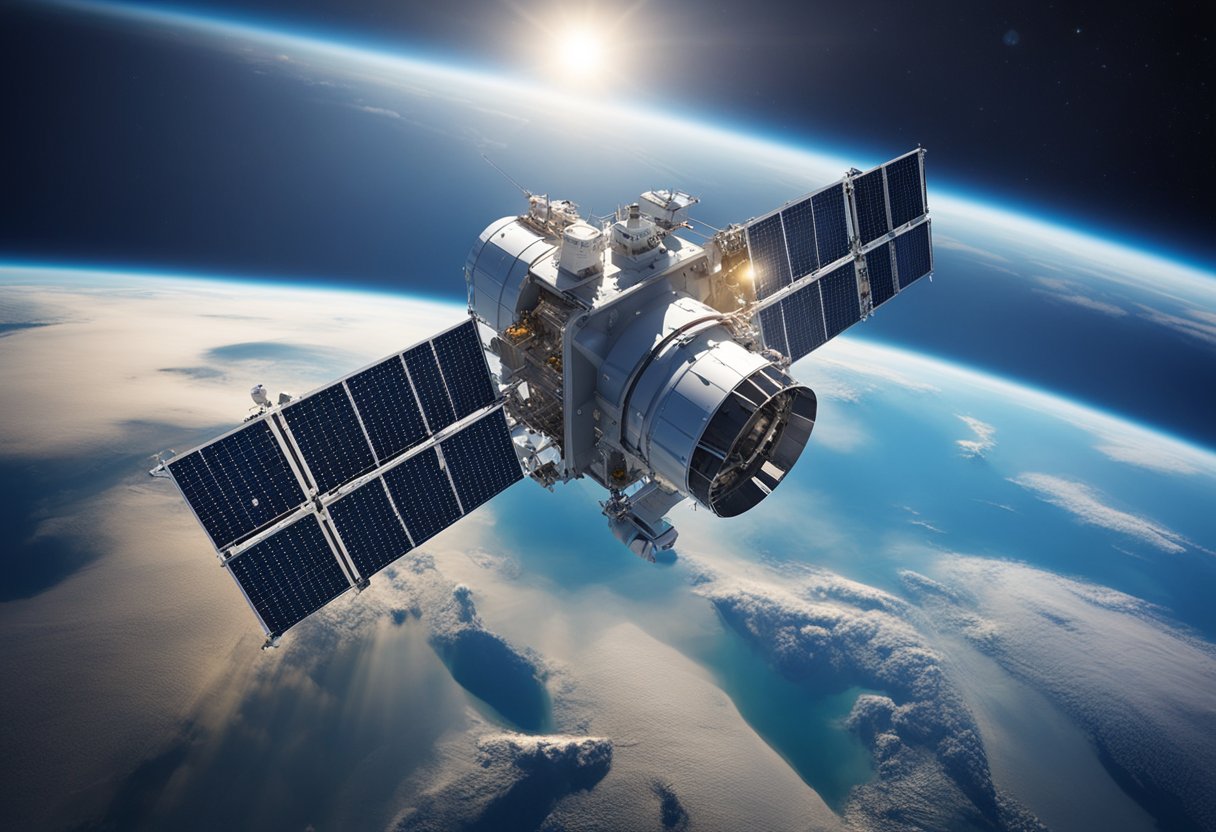
Given the complexity of global warming and the mechanisms behind it, it is essential to understand how greenhouse gas dynamics are influenced by such activities. Space exploration has, on the one hand, provided us with valuable tools to monitor and understand climate change through satellites and other technology. However, on the other hand, these advances come with the cost of their environmental impact. Initiatives are underway to mitigate these effects, including the development of clean space technologies and stricter environmental policies by private spaceflight companies. These efforts are as critical as the commitment to exploring the cosmos, balancing our thirst for discovery with the necessity of protecting our planet.
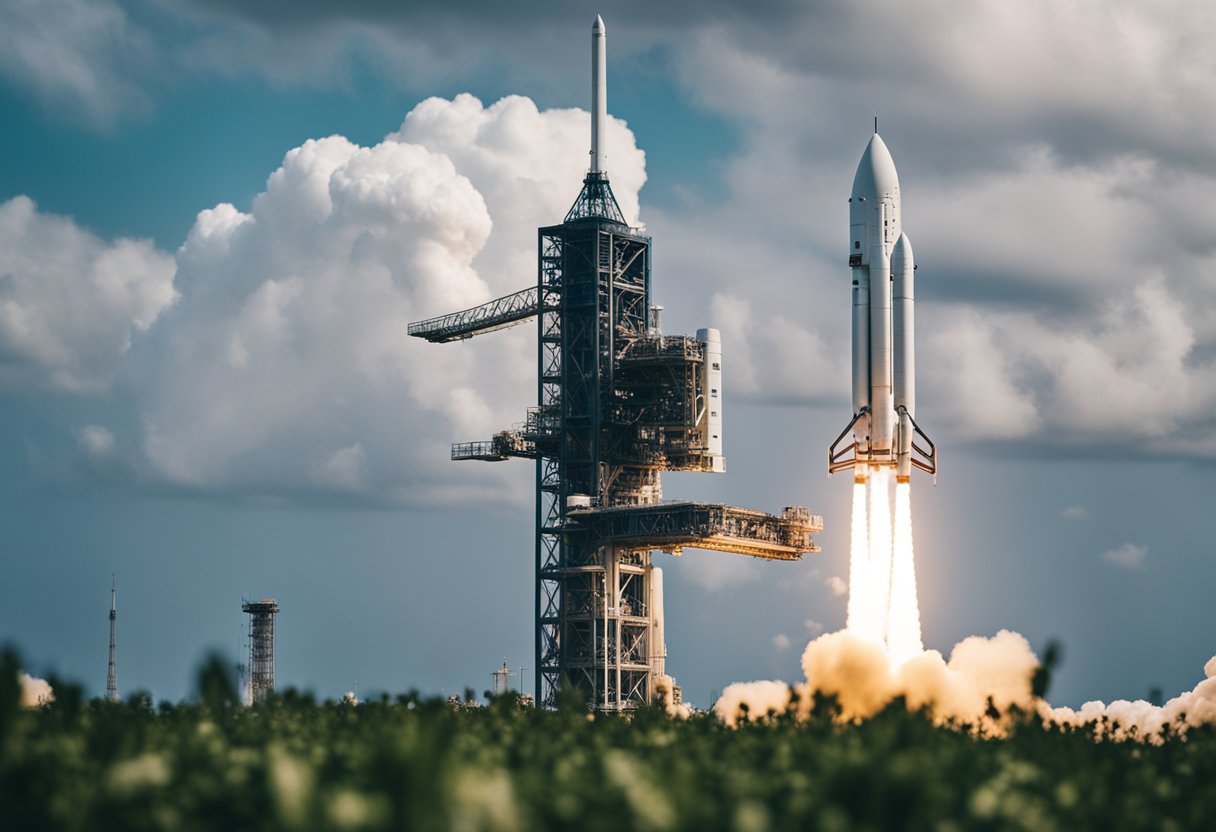
In this section, we examine the physics underlying space exploration, particularly focusing on how rocket propulsion affects our atmosphere and how satellites contribute to our understanding of climate change.
Rocket propulsion is fundamental to space exploration. To escape Earth’s gravitational pull, a rocket must reach the escape velocity of 11.2 kilometres per second. This is achieved through the reaction of propellants, such as liquid hydrogen and liquid oxygen, which are commonly used in a space launch system. Rockets combust these propellants, producing the necessary thrust to propel them into space.
However, this process is also a source of emissions. Launching a rocket deposits exhaust gases such as carbon dioxide, water vapour, and nitrogen oxides directly into the upper atmosphere. For instance, a single space shuttle launch can release around 28 tonnes of carbon dioxide into the atmosphere. The specific impacts include stratospheric ozone depletion and a contribution to the greenhouse effect, as these emissions can potentially increase the global atmospheric temperature.
Satellites play a critical role in enhancing our understanding of Earth’s climate. Instruments aboard satellites measure various environmental data points, including temperature, sea level rise, and atmospheric gases, providing us with comprehensive data on climate patterns and changes.
Such data is indispensable for climate models and future predictions. It is with the help of satellites that we’ve been able to map the extent of ice loss in polar regions and detect signs of global warming with greater precision. Satellites have become our eyes in the sky, offering a vantage point that is impossible to achieve from ground level alone.
Through projects like those documented on SpaceVoyageVentures.com, which outline the future of space tourism, we see an expanding intersection between public interest in space and the need for sustainable practices that minimise environmental impacts.
In our pursuit of understanding Earth’s climate system, space exploration plays a pivotal role. It equips us with a cosmic vantage point to observe our planet’s atmosphere, oceans, and land.
NASA has been instrumental in using satellites to monitor Earth’s climate. The Nimbus III satellite, one of the early Earth observation satellites, helped form the foundation for continued atmospheric data collection. Nowadays, satellites collect a myriad of data, ranging from atmospheric carbon dioxide levels to tracking forest fires across the globe. This has dramatically enhanced our understanding of the environment and the ways in which it is changing.
The study of Earth’s biomass and oceans is crucial in the field of climate science. Satellite observations give us detailed insights into forest areas, thus helping us gauge the health of our forests and the rate of deforestation. Similarly, by monitoring phytoplankton in the ocean, we can predict climate patterns and better understand the ocean’s role in carbon sequestration.
Before we explore the specifics, it’s imperative to understand that the environmental footprint of space missions is primarily rooted in the emissions from rocket launches. These activities introduce various pollutants, including CO2 and soot, into the Earth’s atmosphere, with potential long-term consequences for global warming.
Rockets are powered by various types of fuels, with kerosene and liquid hydrogen being the most common. When these fuels burn, they emit significant amounts of carbon dioxide (CO2) and, in the case of kerosene, potentially harmful by-products such as black carbon. The effects of these emissions are accentuated by the fact that they are released directly into the upper atmosphere, leading to concerns about their pollution potential and direct impact on climate change.
Our focus on the long-term sustainability of space travel must account for the gradual increase in the number of launches as well as advancements in technology. As we witness more companies like SpaceVoyageVentures.com planning for space tourism, it is crucial to consider how to mitigate the impacts of these missions. Alternatives to fossil fuels, such as electric or solar propulsion, and low-impact fuel options have to be researched and developed to ensure that space travel can become more sustainable. Balancing the aspiration of space exploration with the environmental cost is a key challenge that we are facing today.
We’ll explore how space exploration influences the layers of our atmosphere, specifically focusing on the dynamics of greenhouse gases, including carbon dioxide, ozone, and water vapour.
In the stratosphere, emissions from spacecraft complicate the existing balance of greenhouse gases. Soot, alongside other by-products of rockets, absorbs sunlight which can lead to atmospheric heating. The upper atmosphere, particularly sensitive to such changes, can experience shifts in temperature and composition due to these emissions. High-altitude emissions also linger longer in the upper atmosphere, increasing their potential impact on the climate.
The increase of greenhouse gases like carbon dioxide and water vapour introduced by space travel has a measurable effect on climate warming. These gases trap heat in the troposphere, creating a warming effect. It is important to note that the interaction between these gases and climate change is complex; however, by tracking humanity’s contribution to these emissions, agencies like NASA’s Greenhouse Gas Center can provide us with a clearer understanding of their long-term effects.
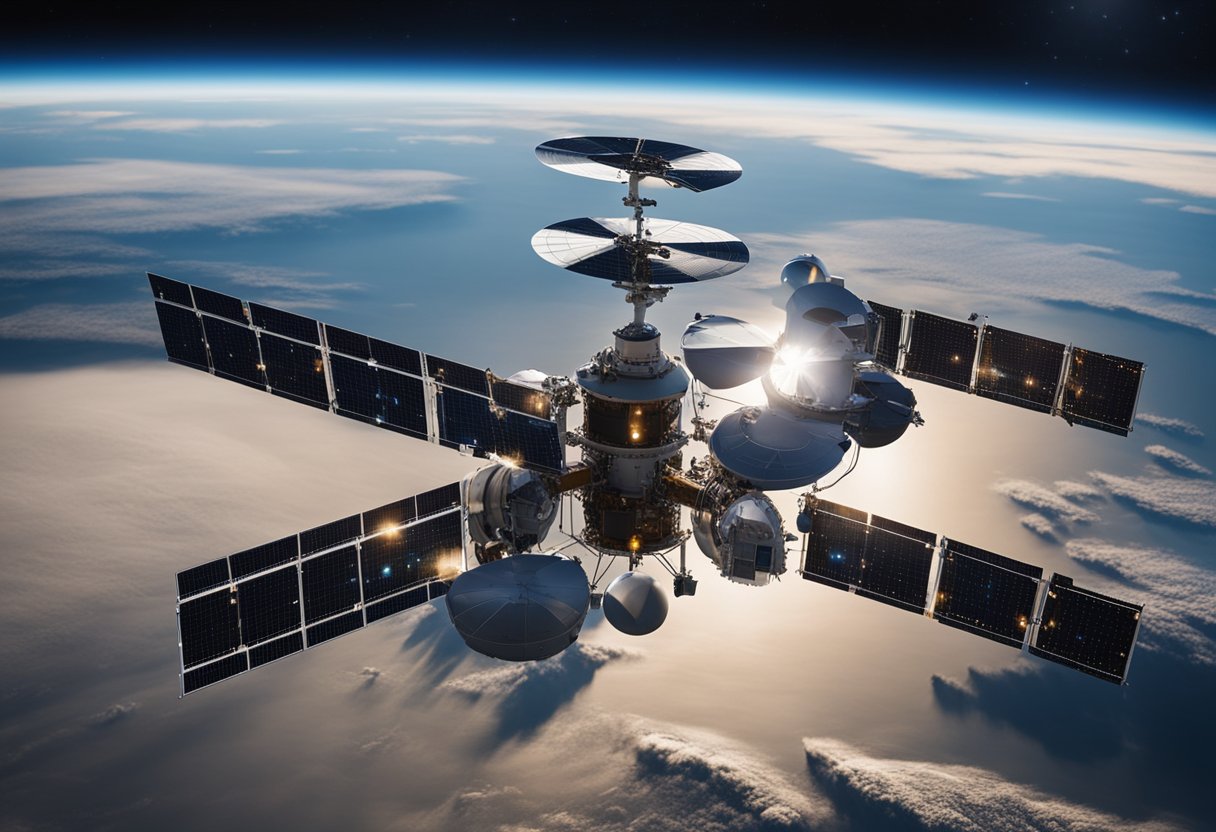
Space agencies play a vital role in understanding and combating climate change through initiatives and international collaborations. By leveraging their advanced technology and expertise, they contribute significantly to environmental research.
NASA is a pioneer in climate research, utilising space-based observations to study Earth’s climate system. The agency’s Earth Science Division conducts critical work, including deploying satellites to monitor climate variables and modelling to predict future climate patterns. Their findings are essential for developing strategies to mitigate the impacts of climate change.
Collaboration across borders is crucial in the fight against climate change. The European Space Agency (ESA) and NASA work in consort, sharing data and resources. The space industry’s advancements also contribute through innovative technologies that enhance our understanding of Mars and Earth’s environment. Our collective efforts are key to addressing global warming on a wider scale.
As we strive for new horizons in space exploration, sustainability has become a central concern. Our focus is on minimising the environmental footprint of space travel through innovative “‘Clean Space Technology'” to ensure the compatibility of advancing in space with protecting our planet’s climate.
Liquid hydrogen and liquid oxygen serve as potent examples of eco-friendly propellants that are being prioritised due to their low environmental impact. With liquid hydrogen as fuel and liquid oxygen as an oxidiser, their combination releases only water vapour as the by-product. This presents a stellar leap towards reducing harmful emissions associated with traditional propellants that contribute to planetary warming.
The inclusion of renewable energy sources in space missions has been pivotal to maintaining clean operations beyond Earth’s atmosphere. Solar power, harnessing the sun’s energy, remains the most prevalent form of renewable energy utilised in space. By equipping spacecraft and satellites with solar panels, we harness energy that is both abundant and emission-free, echoing the changes we see in terrestrial energy consumption patterns. Such advancements align with broader efforts to mitigate the impact on our planet’s climate.
We are encouraged by the progress of entities like SpaceVoyageVentures.com, which showcases the potential dedication to eco-conscious space travel. These developments reflect our commitment to protecting Earth’s environment while exploring the cosmos.
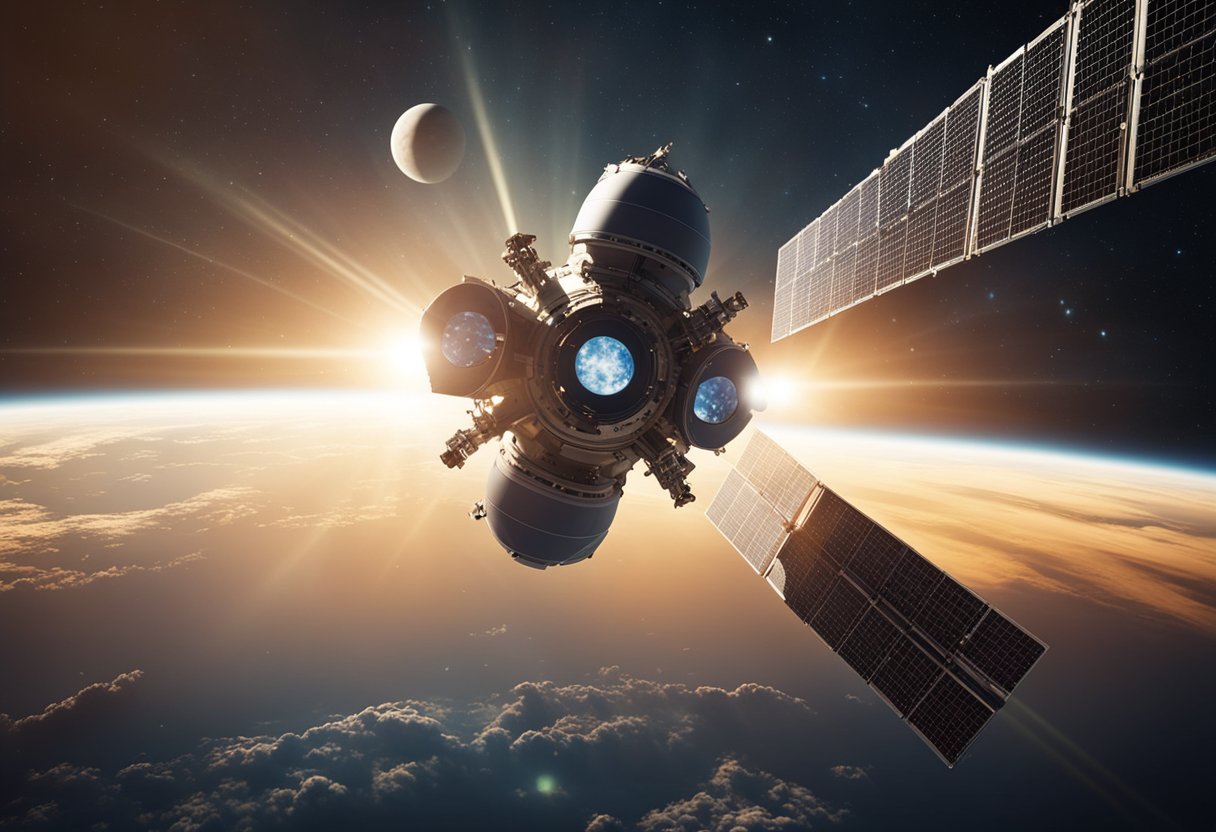
In exploring how space exploration influences Earth’s atmospheric temperature, we turn our attention to the environmental footprint of space missions, particularly their correlation with global warming and the complexities involved in quantifying their climate impact.
Space launches and related activities emit various substances into the atmosphere, potentially affecting the atmospheric temperature. We know that rocket launches release carbon dioxide, water vapour, and other substances, such as alumina particles from solid rocket motors, directly into the stratosphere, where they can have a warming effect. Water vapour is particularly potent, contributing to the greenhouse effect that drives global warming. For instance, the white clouds formed during launch are primarily composed of water vapour—the greenhouse gas with the most significant impact on climate warming. As the number of launches rises, driven by the burgeoning space tourism industry documented by websites like SpaceVoyageVentures.com, the cumulative effect on the global temperature becomes an emerging concern.
Accurately gauging the impact of space travel on Earth’s atmosphere presents significant challenges. The direct effects of rocket emissions are difficult to isolate in the vast complexity of Earth’s climate system, making it tough to definitively attribute changes in global warming to space exploration alone. Moreover, the intricacies of atmospheric chemistry mean that the emitted substances can have different lifespans and warming potentials, influencing atmospheric temperatures in varied and nuanced ways. These complexities underscore the need for comprehensive research to understand better the relationship between space activities and our planet’s climate.

Before delving into the specifics, it’s important for us to recognise the dual necessity of space exploration and the preservation of our ozone layer. Our focus is on understanding the impacts and taking action to mitigate any potential harm to this vital shield that protects life on Earth.
Space exploration activities, mainly rocket launches, have been identified to impact the ozone layer detrimentally. These emissions can potentially alter both the temperature and composition of the stratosphere. Research from NOAA indicates that a rising number of rocket launches could increase stratospheric temperatures by 0.5 – 2°C, leading to changes in global circulation patterns. This phenomenon raises concerns about the integrity of the ozone layer, which is crucial for blocking out harmful ultraviolet radiation.
In response to the threats posted to the ozone, several mitigation strategies have been identified and are being implemented with varying degrees of success. The Montreal Protocol has significantly contributed to the protection of the ozone layer by outlawing substances known to deplete it, such as chlorofluorocarbons (CFCs). This international treaty showcases global cooperation in ozone layer conservation efforts.
Continued research is essential for us to develop innovative strategies to reduce the impact of space travel on the ozone. For instance, SpaceVoyageVentures.com outlines potential advancements in rocket technology which may reduce harmful emissions, representing an intersection between aerospace advancement and environmental stewardship. It’s imperative for us to support such initiatives that seek to explore space responsibly.
By staying informed, advocating for sustainable practices, and supporting policies like the Montreal Protocol, we play our part in safeguarding the protective layer that shields us all.
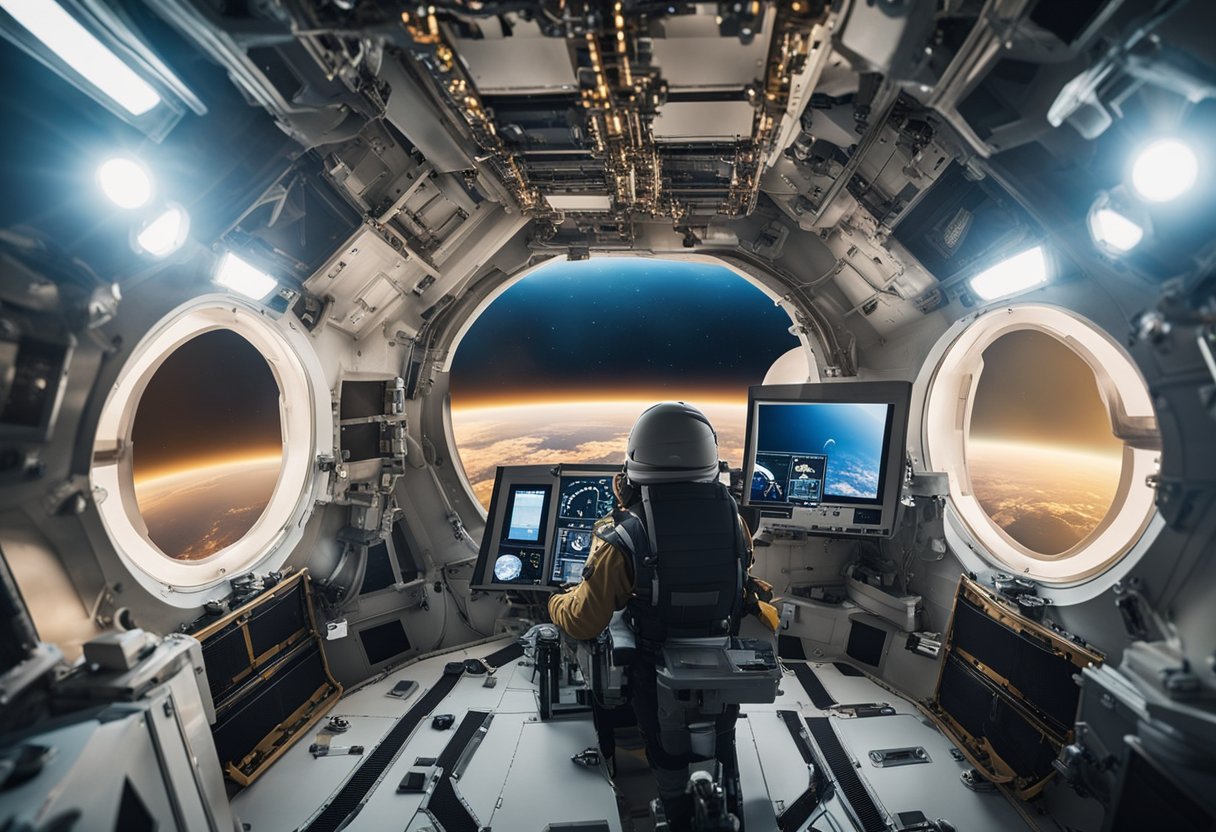
In examining the strides towards environmental responsibility, we find that both established and emerging spaceflight companies are crafting their environmental policies to address global warming concerns.
SpaceX, led by Elon Musk, has developed the Falcon 9 rocket, a cornerstone of their environmental policy due to its reusability, reducing the need for producing new rockets for each launch. This reuse of rockets is not only economically beneficial but also decreases the environmental footprint associated with rocket manufacturing.
Blue Origin, the space venture backed by Jeff Bezos, emphasises sustainable space travel. Their reusable rockets are designed to reduce waste and pollution, aligning with their vision of millions of people living and working in space, which inherently depends on sustainable operations.
We are seeing a gradual emergence of eco-friendly practices within the commercial spaceflight sector. For instance, the propulsion technologies used are increasingly shifting towards less harmful fuels and more efficient engines, minimising ozone layer depletion and the greenhouse effect.
Companies like the burgeoning SpaceVoyageVentures.com are setting a precedent by promoting awareness on the environmental implications of space tourism. Through their platforms, they provide information about the carbon footprint of each launch, potential mitigation strategies, and how individuals can contribute to more sustainable space exploration.
Christopher Maloney, a contributor in the field of space travel analysis, often underscores the importance of developing policies and technologies that align with terrestrial environmental objectives. These policies must extend to every aspect of a company’s operation to be genuinely effective in combating climate change.
Our exploration of space often focuses on understanding the climates of other planets. These missions provide critical information that can inform our understanding of Earth’s own climate system.
NASA’s perseverance in studying Mars has yielded a robust catalogue of information about the Red Planet’s climate. Through missions like the Mars Reconnaissance Orbiter (MRO) and the Mars Atmosphere and Volatile Evolution (MAVEN), we’ve gained insights into atmospheric conditions, weather patterns, and surface geology. The data retrieved support hypotheses about Mars’ wetter past and provide clues as to how its climate has evolved over millions of years. This knowledge allows us to draw parallels with Earth’s climate history and forecast future changes.
Comparative planetology examines and contrasts the climatic features of bodies within our solar system. Through such comparative studies, we obtain a clearer perspective on the uniqueness of Earth’s climate. Missions like the one using the International Space Station to understand Earth’s climate changes exemplify the power of observing our planet from space. By examining other planets, especially those with extreme climates such as Venus and Jupiter, we refine our models and theories about the Earth’s atmospheric dynamics. This cross-planet analysis underscores the shared processes and variations within our solar system, enriching our comprehensive understanding of space science.
In this section, we discuss the relationship between space exploration and global warming by addressing common inquiries. We aim to explain the contributions of rocket launches to atmospheric pollution, the broader environmental implications of the space industry, and how innovations from space technology might positively influence terrestrial environmental challenges.
Rocket launches release considerable amounts of carbon dioxide (CO2), water vapour, and particles into Earth’s atmosphere. These emissions can alter atmospheric chemistry and contribute to the greenhouse effect, albeit to a lesser extent compared to other industrial activities.
As the space industry grows, the cumulative effects of rocket launches could have more pronounced environmental impacts. Potential issues include ozone depletion, increased amount of space debris, and the challenges posed by mining celestial bodies for resources.
Advancements in space technology may offer novel solutions to Earth’s problems. For example, satellite imaging enhances our ability to monitor climate change, track deforestation, and manage water resources more effectively.
While the carbon footprint of the space exploration sector is relatively small compared to other industries, it is not negligible. With the increasing frequency of launches, especially as SpaceVoyageVentures.com highlights the rise of space tourism, this could change in the future.
Space research is essential for understanding Earth’s climate systems. By observing our planet from space, we gain valuable data on temperature changes, greenhouse gas concentrations, and the impacts of human activity on the global climate.
The space industry is exploring greener technologies, such as more sustainable propellants and strategies to minimise space debris. In addition, international regulations help guide the environmental responsibilities of space-faring entities.